Very bright and surprisingly tasty "Chanterelle" pepper for preparations, delicious dishes and fresh consumption
Chanterelle pepper belongs to hybrids, which means that it is resistant to weather changes and major diseases. Gardeners speak of the vegetable as tasty and very juicy. Orange peppers are used in salads and side dishes.
Let's take a closer look at the description of the Chanterelle variety and how to grow a rich harvest on your site.
The content of the article
What is this pepper
The f1 hybrid is grown in a greenhouse, greenhouse or open field. It is unpretentious in care, therefore, a novice gardener can also get an excellent harvest.
As befits a hybrid, Chanterelle is different stable yield, resistance to pests and diseases. The vegetable got its name for its bright orange color. Seeds are purchased only in trusted stores.
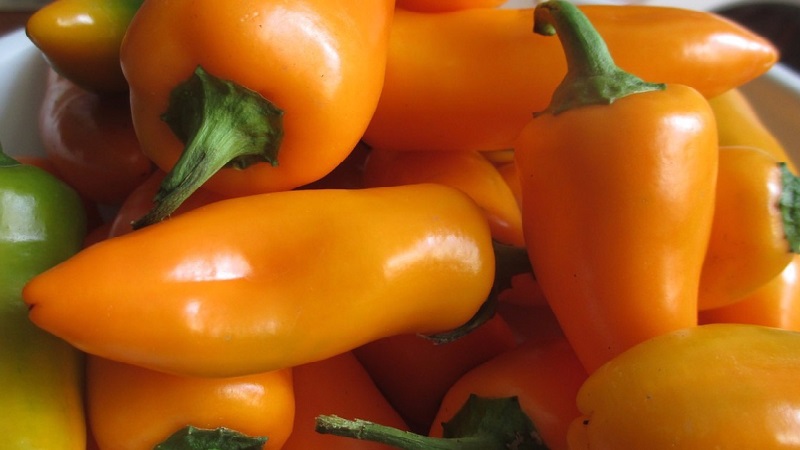
Features:
Early maturing hybrid: ripens on average 120 days after planting... Bushes are low, about 70 cm in height. Peppers are planted in hilly and sunny beds: in such conditions, the culture will show the best result.
Interesting! The chanterelle is an amazing hybrid. Many grow it at home on a balcony or windowsill. The main thing is to prepare the soil and a suitable container in advance.
Fruit characteristics and yield
Conical shape, glossy surface, orange color... Fruit weight varies from 30 to 50 g, few seeds. The walls are dense, up to 7 mm thick. The pulp is fleshy, the aroma is sweet. Due to its small size and juicy taste, Chanterelle is excellent for canning and stuffing whole fruits. From 1 m2 about 3 kg of beautiful and sweet vegetables are harvested.
Important! After harvesting, the pepper is stored in the refrigerator or cellar. The hybrid remains elastic for a long time, does not lose its taste and marketability.
Preparation for growing
It will be possible to grow a crop only on well-prepared and nutritious beds.... To do this, in the fall, they choose a place for future planting, clear the land of debris and weeds.
Pepper feels comfortable in well-fertilized soil, therefore, after digging, fertilizers containing phosphorus, magnesium and calcium (for example, potassium salt or superphosphate) are applied to the soil. With the arrival of spring, the beds are dug up again, aisles are organized. The recommended planting pattern for the Chanterelle is 30x50.
Important! To improve the quality of the soil, a mixture of dry wood ash and lime is added to the beds. Liming reduces the acidity of the earth and saturates it with nutrients.
The seeds of the hybrid are already pre-processed by the manufacturer, however, some gardeners carry out another disinfection with a solution of potassium permanganate. This is necessary to increase seed germination and provide additional protection against pests and diseases.
Growing seedlings
Hybrid seedlings are prepared in early March.... For this, seedling containers and soil are purchased in advance. Peat tablets, flower pots, dense plastic bags are used as containers. Before disembarking, the container is thoroughly washed with soda and wiped with a dry clean towel. Disinfected soil from the garden or ready-made store mixes is used as soil. Peat, humus, compost or wood ash are added to the soil.
Important! Loose and light earth is chosen according to the structure so that the roots receive oxygen. Also, there should be no weeds, debris, larvae in the soil.
Seedling care consists of several procedures... First of all, this is regular watering. It is recommended to moisten the soil with a pipette, directing the water directly under the root. This will prevent the growth of fungi and dangerous germs. After 15–20 days from the moment of planting, the peppers are fertilized with liquid organic matter (for example, bird droppings). For healthy development, seedlings are placed in a warm and sunny place. With a lack of light, phytolamps or fluorescent devices are used.
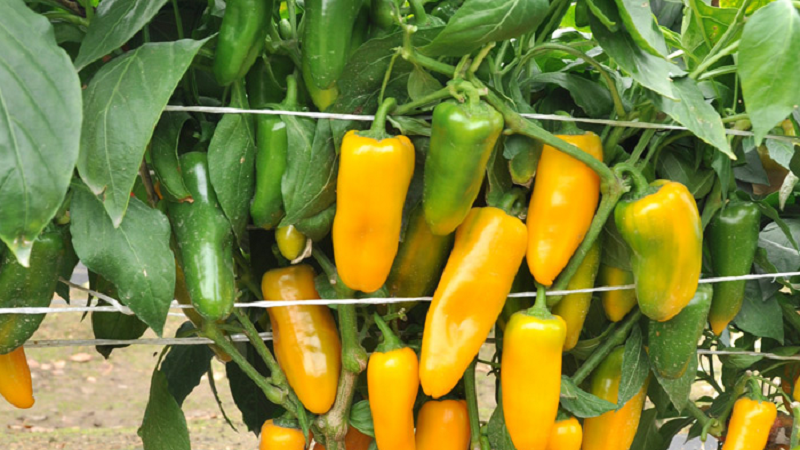
As soon as the seedlings have 1-2 true leaves, they are dived (transplanted into a larger container). This is an integral step in the care, as the bushes require more space, moisture and nutrients as they grow. A dive requires a new container and soil. The sprouts are carefully removed with a small spatula and placed in a container. Sprinkle earth around the stem and watered abundantly.
About other varieties of pepper:
Juicy and fruitful "Red Bull" pepper
Planting in open ground and further care
Seedlings are sent to the greenhouse in mid-May, in open ground - 2-3 weeks later... 10 days before planting, the bushes are watered pointwise so that there is no waterlogging. In the beds, holes are prepared in which the sprouts are placed, and sprinkled on top with loose earth.
It is recommended to replant peppers on a cloudy and windless day to avoid sunburn on the plant.
Further care consists of the following procedures:
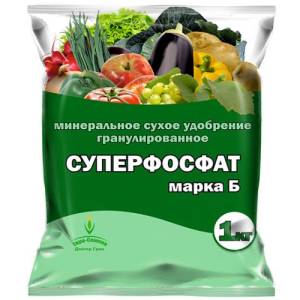 . Bell peppers love water, however, it is not recommended to overmoisten the soil: this leads to the occurrence of diseases. Irrigate the beds in the morning or evening when there is no sun. Otherwise, the water will quickly evaporate and the earth will crack. About 1 liter of warm water is consumed for 1 bush. The procedure is carried out once every 5 days.
. Bell peppers love water, however, it is not recommended to overmoisten the soil: this leads to the occurrence of diseases. Irrigate the beds in the morning or evening when there is no sun. Otherwise, the water will quickly evaporate and the earth will crack. About 1 liter of warm water is consumed for 1 bush. The procedure is carried out once every 5 days.- Fertilizers... Mineral and organic dressings alternate. Chanterelle pepper reacts positively to superphosphate, ash, ammonium nitrate. Fertilize the bushes before watering, once every 10-15 days.
- Bush formation... Many small fruits are formed on the plant, so it is necessary to remove weak shoots in time. Thanks to the formation, the bush spends power not on the growth of green mass, but on the development of the fruits themselves.
- Loosening the earth... It is carried out before each watering. This makes the ground lighter and more airy and serves to prevent the appearance of insect pests.
Features of cultivation and possible difficulties
In the process of growing, they pay special attention to weeding the beds.... Together with weeds, larvae and insect pests are removed. Weed grass sucks out all the nutritious juices from the pepper, which is why the fruits wilt and lose their taste. Pull out weeds before they develop a powerful root system, otherwise it will be much more difficult to remove them. The procedure is best done after rain, as it is easier to get grass out of wet ground.
With a deficiency of minerals, the development of the plant deteriorates... For example, with a lack of nitrogen, a slow development of the bush is observed, the stems become thin and weak, the leaves acquire a pale green color. Feeling the need for phosphorus, the leaves turn purple-brown, the fruits dry out. The introduction of mineral fertilizers will correct the situation.
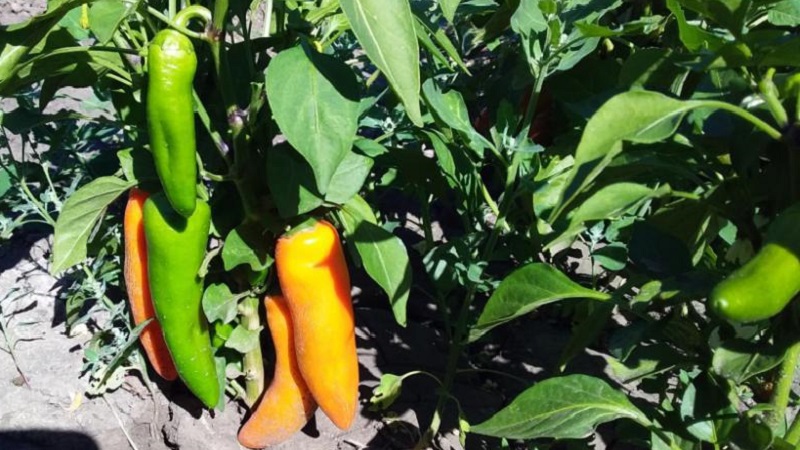
Typical diseases and pests
Although the hybrid is highly immune to disease, occasionally the bushes are affected by powdery mildew or root rot. The cause of diseases lies in improper care, contaminated seeds or soil. Powdery mildew appears as a white bloom on the leaves, which becomes larger over time. Prevention of its occurrence - spraying based on iodine and milk whey. For treatment, "Previkur" is used.
Root rot appears due to increased acidity of the soil or violations of the rules for growing seedlings. The plant becomes lethargic, yellow-brown dents appear on the stem. The root collar darkens, and soon becomes black.As a preventive measure, the soil in the greenhouse is disinfected, the bushes are regularly fed with organic substances. Root rot is treated with Bordeaux liquid or a solution of copper sulfate.
Of the pests in the beds, there are nematodes - miniature underground worms... Because of them, the stems curl, and the leaves turn yellow and dry. To protect the peppers, follow the rules of crop rotation and weed regularly. If the pest has already been seen in the beds, the drug "HOM" is used to combat it.
Read also:
Advantages and disadvantages of a hybrid
Bell pepper Chanterelle has a beautiful and bright color - orange vegetables look attractive on the table, they are used to prepare various dishes. Stews, casseroles, snacks, canned and fermented dishes are prepared from the fruits.

High content of fiber, vitamins and other useful components makes pepper indispensable for the preparation of dietary meals. In leaving, the Chanterelle requires a minimum of time and effort, the bushes do not need to be tied up or pinned. After harvesting, the crop is perfectly stored: just place it in a cool and well-ventilated place.
Important! Pepper contains vitamins A, E and C, as well as acids and beneficial essential oils. Thanks to such a useful composition, regular consumption of a vegetable increases immunity and serves as the prevention of many diseases.
The disadvantages of the hybrid include low yield.... Chanterelle is great for growing in small backyards, but no more. For the rest, the vegetable performs well.
Reviews
Hybrid reviews are mostly positive, but some summer residents were disappointed with the result.
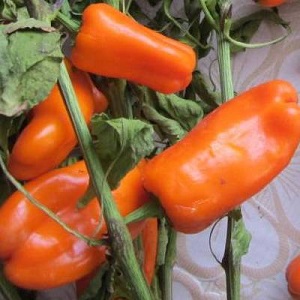 Roman, Moscow: “I grow chanterelle pepper only in a greenhouse. Bushes are compact, unpretentious in care. The fruits have a pleasant taste and small size, they make tasty and healthy preparations for the winter. I recommend for growing ".
Roman, Moscow: “I grow chanterelle pepper only in a greenhouse. Bushes are compact, unpretentious in care. The fruits have a pleasant taste and small size, they make tasty and healthy preparations for the winter. I recommend for growing ".
Polina, Anapa: “I planted pepper for the first time. She looked after, as it should be: watered and fertilized with organic matter, did not forget about weeding. However, the hybrid developed slowly, the fruit set poorly. I think the reason is too rainy summer. The harvest turned out to be meager, I will try to grow Chanterelle again next year ".
Lilya, Ufa: “Chanterelle pepper, in my opinion, has an average taste. However, the appearance is excellent, it looks very nice both on the beds and on the table. It's easy to grow it ".
Conclusion
Bright and tasty Bulgarian pepper Chanterelle performs well both fresh and after cooking. Planting a vegetable is recommended after cabbage, onions or legumes. Pepper loves sunlight and warmth, so special attention is paid to the landing site.
In care, the culture does not cause trouble: it is enough to regularly water, fertilize and weed the beds. To obtain a rich harvest, the seedling method is used. The vegetable is harvested in August, when the fruits turn orange and become elastic. Pepper is versatile in cooking: delicious pulp is harmoniously combined with vegetable, meat and fish dishes.